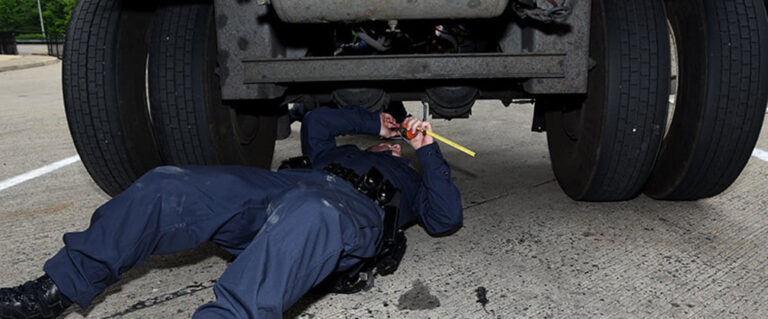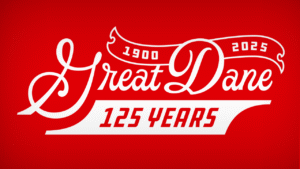GREENBELT, Md. — During an unannounced Brake Safety Day held May 26, commercial motor vehicle inspectors in Canada, Mexico and the U.S. conducted 10,091 inspections and placed 1,273 vehicles out of service for brake-related critical vehicle inspection items. Inspectors tracked and reported data collected during the one-day inspection and enforcement initiative to the Commercial Vehicle Safety Alliance (CVSA).
“Inspectors conducted their usual inspections and reported brake-related data to CVSA for Brake Safety Day,” said CVSA President Sgt. John Samis with the Delaware State Police. “We are sharing the results to call attention to the importance of CMV brake safety.”
According to CVSA, brakes are one a commercial vehicle’s most important systems, but brake-related violations are one of the top culprits when vehicles are placed out of service. Brake system violations was the top vehicle out-of-service category during the 2020 International Roadcheck.
On Brake Safety Day each year, CVSA-certified inspectors conduct inspections, focusing on the vehicle’s brake systems and components, and remove commercial vehicles that have brake-related out-of-service violations from roadways.
Here are the results from May 26:
- Six jurisdictions from Canada, 42 U.S. jurisdictions, and Mexico’s Ministry of Communications and National Guard participated in the initiative.
- Inspectors conducted a total of 10,091 inspections and placed 1,273 vehicles out of service for brake violations.
- The brake-related out-of-service rate in North America was 12.6%.
- The U.S. brake-violation out-of-service rate was 13.3%. In Canada, the rate was 11.4%, and in Mexico, the rate was 2.9%.
- In Canada, 946 inspections were conducted. In Mexico, inspectors conducted 487 inspections, and in the U.S., 8,658 inspections were conducted.
- Fourteen vehicles were removed from roadways in Mexico for brake violations. In Canada, 108 vehicles were placed out of service for brake violations, and in the U.S., 1,151 vehicles were removed from roadways because of brake violations.
Brake hoses/tubing were the focus area for this year’s Brake Safety Day. Canada, Mexico and the U.S. reported a total of 1,725 brake hoses and tubing violations from the initiative. Canada reported 251 chafing violations, Mexico reported 186 and the U.S. reported 1,288.
Brake hose/tubing chafing violations are divided into five categories according to the severity of the damage or wear and tear:
- Category 1: Brake hose/tubing wear that extends into the outer protective material. Thirty-eight percent, or 664, of brake hose chafing violations were rated as Category 1 (not an out-of-service condition).
- Category 2: Wear has extended through the brake hose/tubing outer protective material into the outer rubber cover. Thirty percent, or 509, of brake hose chafing violations were Category 2 (not an out-of-service condition).
- Category 3: The reinforcement ply is visible, but still intact, due to brake hose/tubing wear. Sixteen percent, or 275, of brake hose chafing violations were Category 3 (not an out-of-service condition).
- Category 4: The reinforcement ply is visible and the ply is completely frayed, severed or cut through. Ten percent, or 169, of brake hose chafing violations were Category 4 (out-of-service condition).
- Category 5: Brake hose/tubing wear extends through the reinforcement ply to the inner rubber layer. Six percent, or 108, of brake hose chafing violations were identified as Category 5 (out-of-service condition).
“Brake hoses and tubing are essential brake system components and must be properly attached, undamaged, without leaks and flexible,” Samis said. “We chose to focus on brake hoses/tubing this year in an effort to reduce deaths and injuries as a result of CMV brake-system failures from pressure or vacuum loss due to brake hose/tubing deficiencies.”
As part of the vehicle inspection process, some jurisdictions in the U.S. use performance-based brake testers that assess a vehicle’s braking performance. On Brake Safety Day, 68 of these tests were conducted; 4% of tested vehicles were placed out of service for insufficient brake performance.
Brake Safety Day and Brake Safety Week (scheduled for Aug. 22-28) are part of CVSA’s Operation Airbrake program, conducted in partnership with the U.S. Federal Motor Carrier Safety Administration (FMCSA), the Canadian Council of Motor Transport Administrators and Mexico’s Ministry of Communications and the National Guard. The goal is to reduce the number of highway crashes caused by faulty braking systems on CMVs by conducting roadside inspections and educating drivers, mechanics, owner-operators and others on the importance of proper brake inspection, maintenance and operation.
The Trucker News Staff produces engaging content for not only TheTrucker.com, but also The Trucker Newspaper, which has been serving the trucking industry for more than 30 years. With a focus on drivers, the Trucker News Staff aims to provide relevant, objective content pertaining to the trucking segment of the transportation industry. The Trucker News Staff is based in Little Rock, Arkansas.














